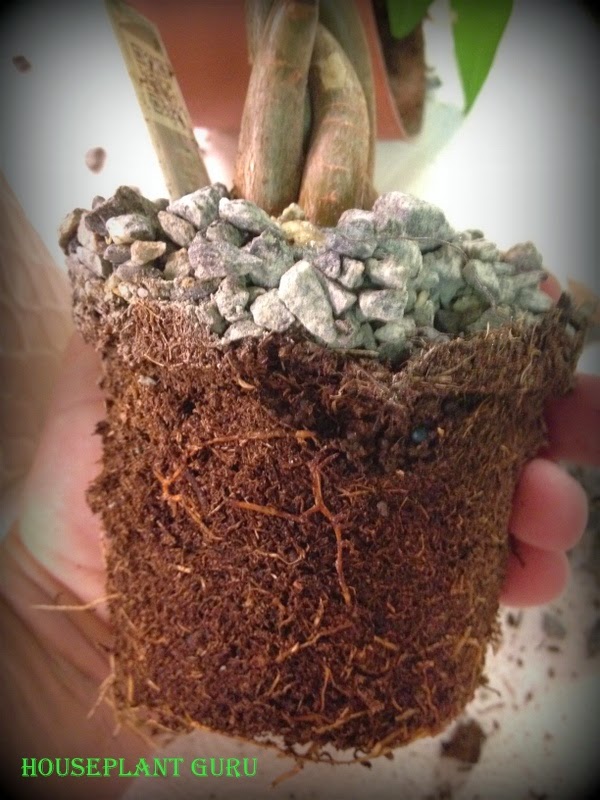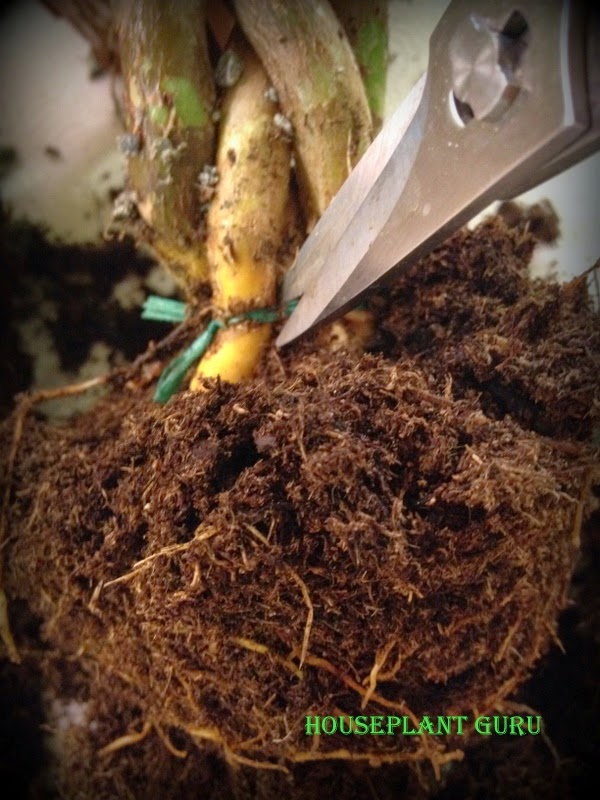 | |
| Money tree glued down |
How many of you have bought plants that have pebbles glued on top of the soil? I hate this. I realize it is done for ease of shipping. The soil stays put, the plant stays upright. It's all good. And to add insult to injury, the containers they are in are usually without a drainage hole. I recently bought a Pachira or money tree after Father's Day. It was 1/2 off -I couldn't pass it up!
 |
| Pachira out of the pot with stones still attached |
So my question is-how would you know your plant needs water. You certainly can't stick your finger in the soil to check for the plant's water needs. Or how would you know if it has too much? You can't look inside the pot.
So, where to begin? First, I chiseled the plant out of its pot. As you can see above, the stones are still intact on top of the root ball and around the stem.
Second, I pulled the glued stones from around the stem. I was as careful as I could be, but as you can see in the above picture some of the bark of the Pachira tree was also removed from around the stem.
After removing the stones, I realized how much soil was around the stems. The soil was way too high up the trunk. After removing the superfluous soil, I found a tie around the stems. When they braid the stems, they need to be tied to stay and grow that way. That is necessary, but as you can see in the pictures below, the tie was cutting into the stem. I'm not sure how long it would have been before this tie girdled the tree and killed it. Would we think out plant just died, or think we had done something wrong? When all along, it is being slowly strangled. Had I not removed the rocks and the soil that were too high on the stems, I would never have know the tie was on there, slowly killing my plant.
So, to help the plant live, I cut the tie so it could "breathe". I think it felt like I do when I take my belt off at the end of the day.
As you can see in the pictures above and below, this plant already has damage from the too tight band.

Even the tag is glued into the rocks.

 | ||||||











